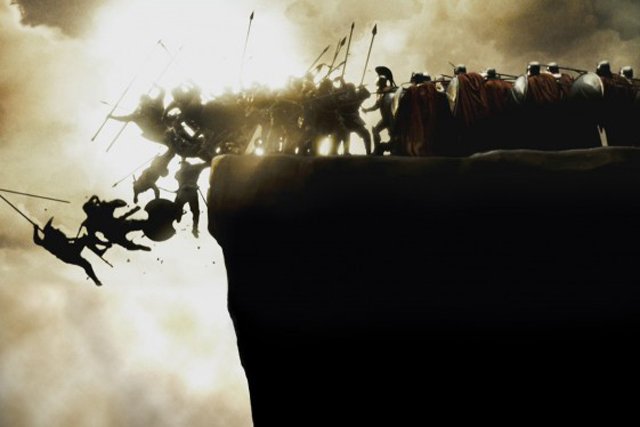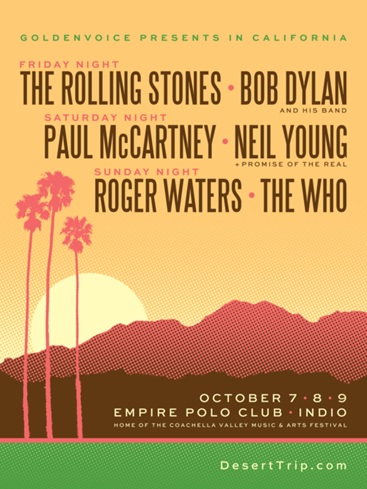
Lately, it seems I’m reading a lot of stories about Classic Rock, as well as blogging about them.
I have also been in several conference rooms reviewing Classic Rock perceptual studies in Q1 as we careen into the spring ratings season.
And inevitably, there’s the requisite discussion about the format’s aging audience, and of course, the “Demographic Cliff.” As you’re reading this blog post, aging Baby Boomers are turning 55 years-old, rendering them of absolutely no value to advertisers and marketers fixated on the 25-54 target.
And yet a factual article in a publication that knows a little something about revenue, profits, and the world of business – The Wall Street Journal – suggests that of all the musical genres, rock is the most dependable and the most profitable, despite the fact that rockers continue to age…and die. And for the purposes of this post, let’s call them classic rockers, because that’s what this story is all about.
Reporter Neil Shah takes on the issue of aging rockers in “Twilight of the Rock Gods,” an article that five different people sent me over the weekend. (You may need to be a WSJ subscriber in order to read it.)
Shah’s premise is that while rock stars are most certainly aging (and dying), their impact on concert revenue and album sales is enormous, eclipsing the efforts of today’s contemporary artists from every other genre – pop, hip-hop, and country. So while there is truly a demographic fall-off as audiences continue to loyally support their musical heroes, it is more than being made up for at cash registers and box offices.
The reason for this odd and even counter intuitive phenomenon is that in the fractured world of new music, the most dependable artists are card carrying AARP members like the Stones, Springsteen, the Eagles, and various members of Pink Floyd. With so many formats and so many platforms in which to hear new music, artists simply cannot put together a coalition to rival bands like Queen, Clapton, and Aerosmith – stars that came to our attention during a time when the music and radio industry models were quite a bit different.
The money quote – literally – is from a guy who manages the estates of rock stars who are no longer with us, Jeff Jampol:
“Every year I watch the Pollstar charts and the guys at the top are always heritage or legacy acts. There may be a real cliff – but people just aren’t looking at it.
Except in radio.
The economics of Classic Rock continue to outshine other formats, despite the inevitable aging of the artists – and fans themselves. As concert ticket prices continue to rise, its aging Boomers are consistently and happily shelling out big sums to enjoy their favorites from yesteryear.

Here are some fun facts from the WSJ, a story that provides multiple sales pieces for Classic Rock radio:
- After more than 50 years on the music scene, the Rolling Stones (average age 73) made the most money per show performed in 2016 – $91 million from just 14 concerts.
- Aging rockers headline the biggest musical events like anchor stores in a mall. Guns N’ Roses was the top act at last year’s Coachella festival, while Bonnaroo will feature U2 in June.
- 2016’s overall concert box office leader was Bruce Springsteen – going strong at 67 – with $268 million in ticket sales, ahead of both Beyoncé and Justin Bieber.
- Nielsen reports that rock’s share of U.S. album sales in 2016 was 41%, followed distantly by R&B (15%), country (13%), and pop (10%).
- Last fall’s Desert Trip festival generated $160+ million, featuring classic rockers that included the Stones, Paul McCartney, the Who, Bob Dylan, Neil Young, and Pink Floyd’s Roger Waters.
- This year’s classic festival promises to to be the Classic East and Classic West events in New York and L.A. respectively, headlined by the Eagles, Fleetwood Mac, Steely Dan, the Doobie Brothers, and others.
- Heritage artists are able to command more money at the box office: Twenty One Pilots charge $36 a ticket, compared to a $122 seat at a Stones concert. Yes, Boomers have more money to spend on entertainment than most Millennials – a plain and simple fact.
In the concert and music industries – as in radio – it’s all about the money. Yet, in related business that include concerts, events, and merch, marketers have figured out how to cash in on maturing Boomers, while radio struggles. They’re going with the tide, and chasing the money. As Shah notes, big ticket concert sales are dependent on “rock audience who have gotten older and wealthier.”
In other words, don’t lose sleep over the cliff – follow the money.
And there’s something powerful in the phrase “According to The Wall Street Journal,” that might get the attention of even the most jaded media buyers.
The video embedded below in the article is an excellent, persuasive, and well-produced look at this demographic and marketing phenomenon, as well as a great story for the efficacy and value of the 35-64 year-old demographic). It’s closing graphic:
“Even in 2017, the 60s and 70s are where the money is.”
Rock on…all the way to the bank.
Thanks to Dr. Ed Cohen, the first of many to send me this article.
- What Is It With Female Robot DJs? - April 30, 2025
- Why “Dance With Those Who Brung You” Should Be Radio’s Operating Philosophy In 2025 - April 29, 2025
- The Exponential Value of Nurturing Radio Superfans - April 28, 2025




So what is the take away for radio? Seems like there isn’t one.
And yet we still can’t convince Madison Avenue to engage in meaningful discussions with their clients about the viability of marketing to over-55s.
When are they all going to wake up and accept these compelling facts, Fred?
The take away is -market your Classic Rock station as a product that delivers the demo with $$$. 55-64 is important and should be included in presentations. There were plenty of 55 plus year olds at a recent Bon Jovi show we attended. Tickets were $250 each (good seats) and beers were $8 each!
Precisely, Bill. Irving Azoff – who is putting together this year’s big event – the Classic West and Classic East concerts – is concerned not a bit about aging demos or ad agency dictates. More than anyone in the entertainment industry, he is focused on the one thing that matters – spendable income. If the radio industry focused more on results than ratings, it would be much further ahead. Thanks for chiming in.